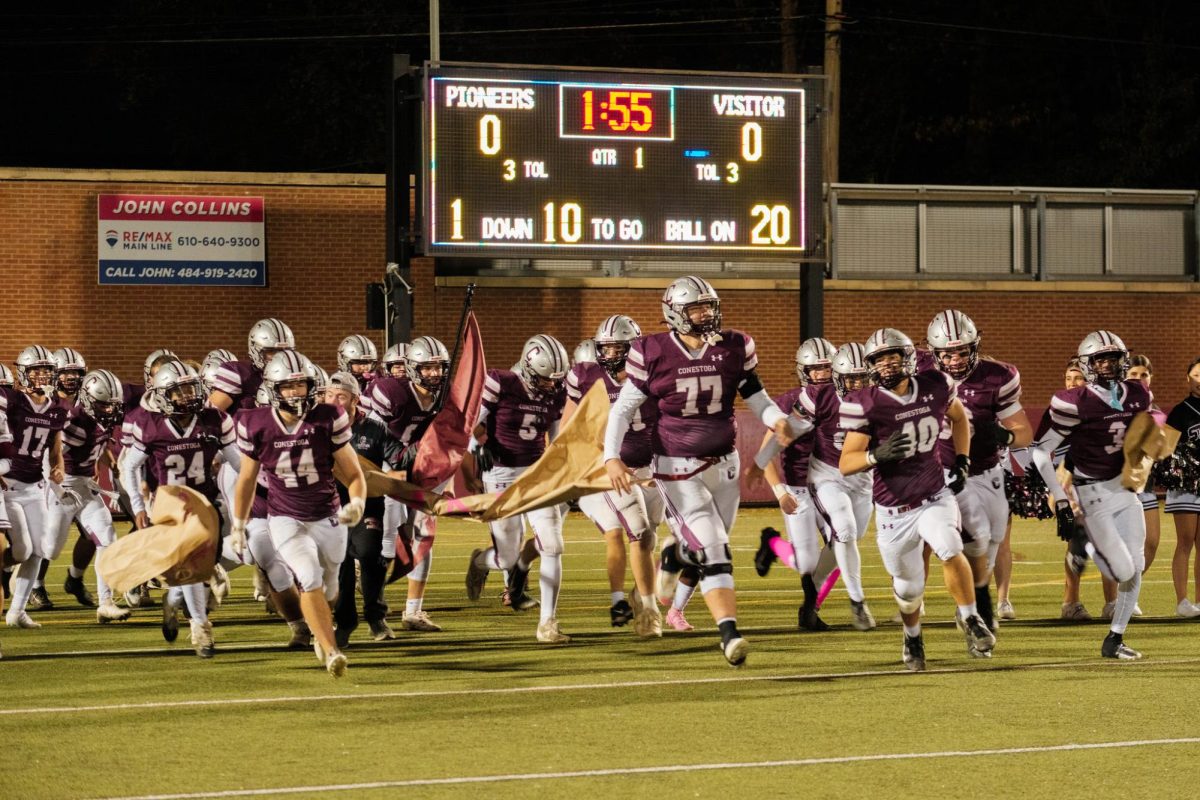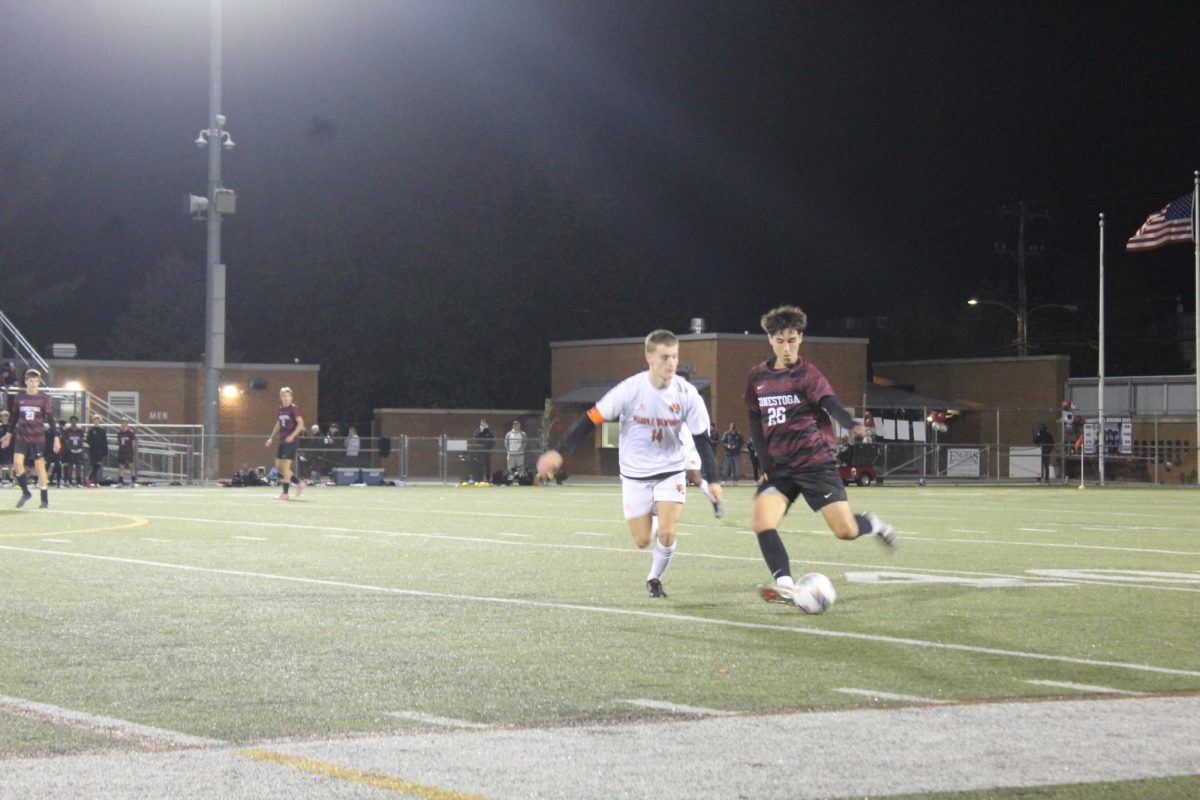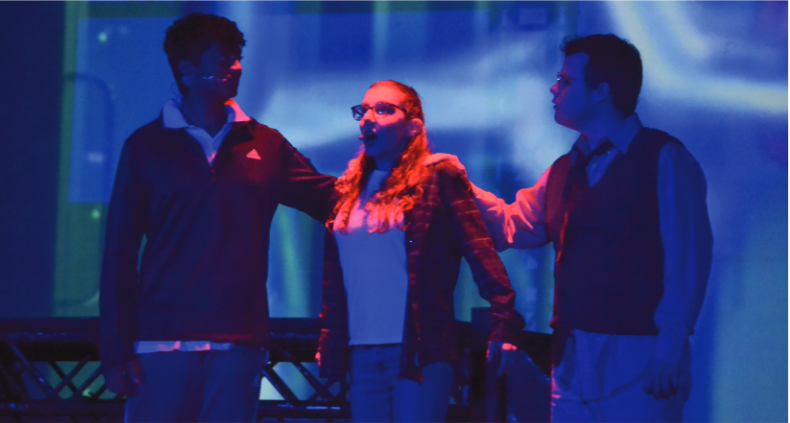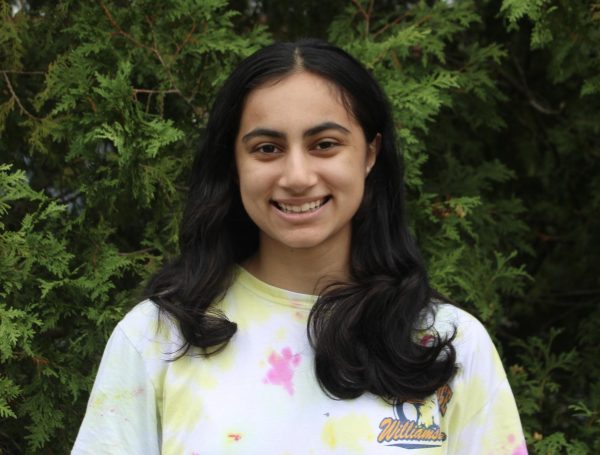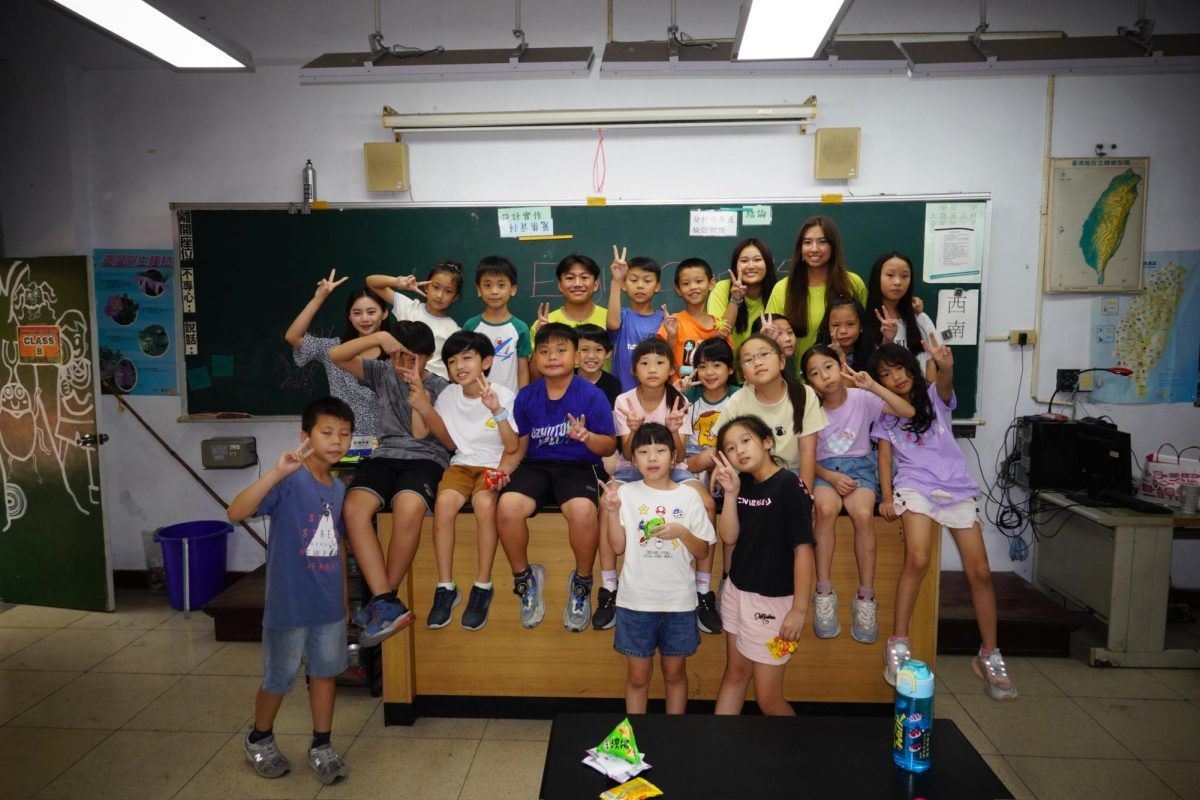By Zara Samdani and Joanna Harris, Copy Editor and Staff Reporter
Reading minds, hopping between different planets and, of course, using an object with five dimensions — these elements are nothing but normal for this year’s fall play.
On Nov. 17, Conestoga premiered “A Wrinkle in Time,” an adaptation of Madeleine L’Engle’s classic 1962 novel. The play is told from the perspective of Meg Murry, an awkward teenager who is troubled by personal insecurities and concern for her missing father. Even though it is set in a modern town, the play incorporates unreal, futuristic elements — making it different from past productions.
“This show heavily relies on technical aspects, like the lights and the set,” said freshman Prranit Arora, a member of the play’s cast. “That’s made the rehearsal process odd. We (the actors) aren’t really sure what the show is going to look like yet because we (don’t) have that technical part.”
To accurately portray the intergalactic setting, the technology crew created digital images, known as projections, of different locations on earth and space. These images are stitched together, projected on the screen — where they serve as the backdrop for the scene — and timed carefully so that they switch to a different image after a scene is over.
“We used the projector for ‘Anastasia’ (last year),” said sophomore Kaitlyn Hess, a member of the stage crew who controls the lights. “But the difference with (‘Anastasia’) is that we bought pre-made projections that were from a different company. This time (for ‘A Wrinkle in Time’), there (were) no pre-made projections, and we (made) everything from scratch.”
The play also used approximately 30 sound effects, which is significantly more than in previous years. The technology crew implemented particular noises to convey specific actions — teleportation, space travel and mind-reading, for example — during the play. When timed correctly, these noises add realism and immerse the audience in the surreal environment.
“If we do our job well and seamlessly, then there are beautiful transitions from scene to scene and the audience feels transported from one part of the story to another — especially in this production of ‘A Wrinkle in Time’ because we’re going around the universe,” said senior Ayala Snir, the left deck captain of the stage crew.
Because of “A Wrinkle in Time’s” modern setting, the cast and crew did not need to prioritize the traditional components of a play, such as the costumes and props. With the exception of interacting with extra-terrestrial creatures, the main actors wear everyday outfits and require minimal theater props.
“Looking at the set itself, there’s really little props,” ’Stoga Theatre director Natalie Wallace said. “A lot of (the play) is communicated through sound, through light, through the projections.”
A combination of a heavy reliance on technology and a decreased use of props sets the play apart from past productions, according to Wallace.
“We’re blessed with some very talented actors with a talented tech crew. They (the tech crew) do a good job telling the story. They do an amazing job of designing that vision that I’m looking for,” Wallace said. “And that’s what makes this process so much easier. Everyone is working together through all their different talents to put on an amazing production.”
Zara Samdani can be reached at [email protected].
Joanna Harris can be reached at [email protected].

















































